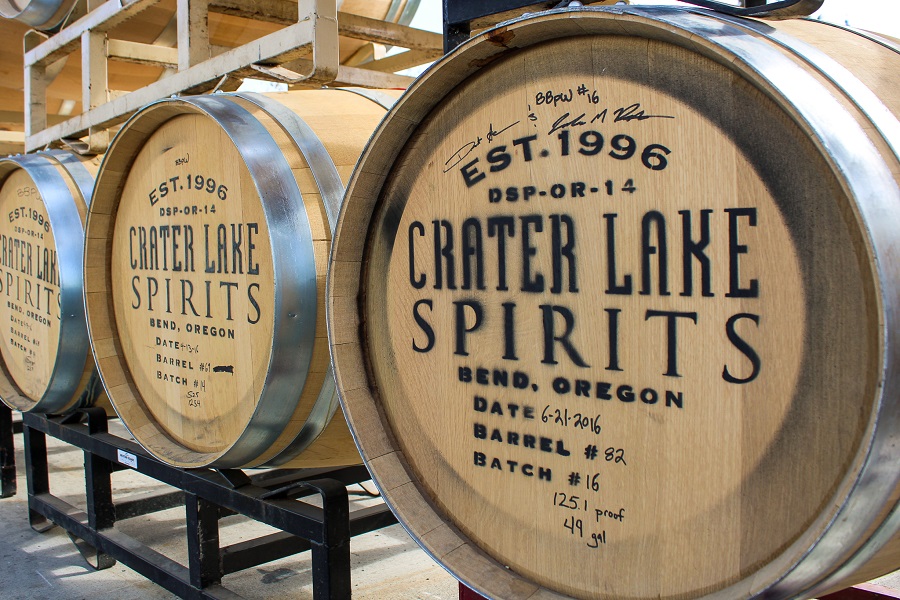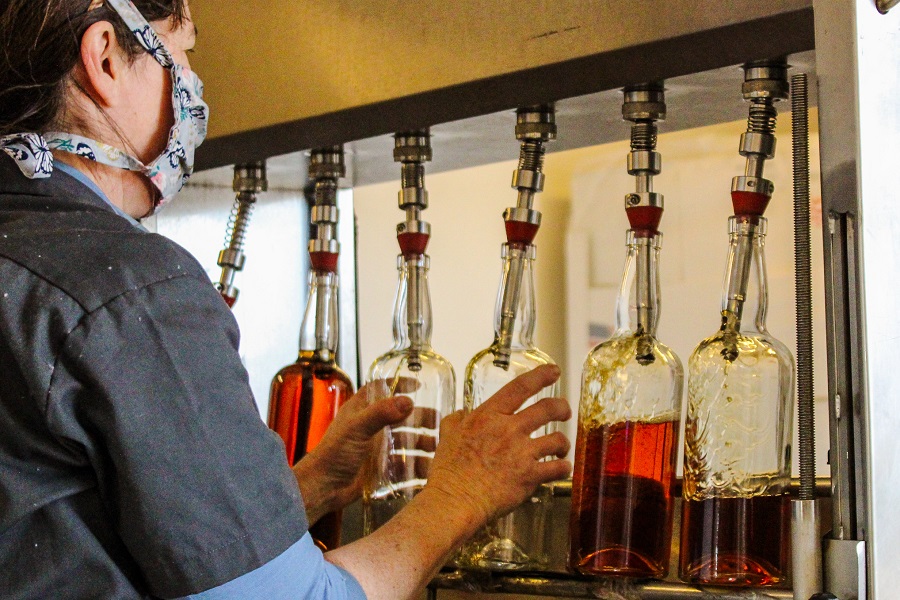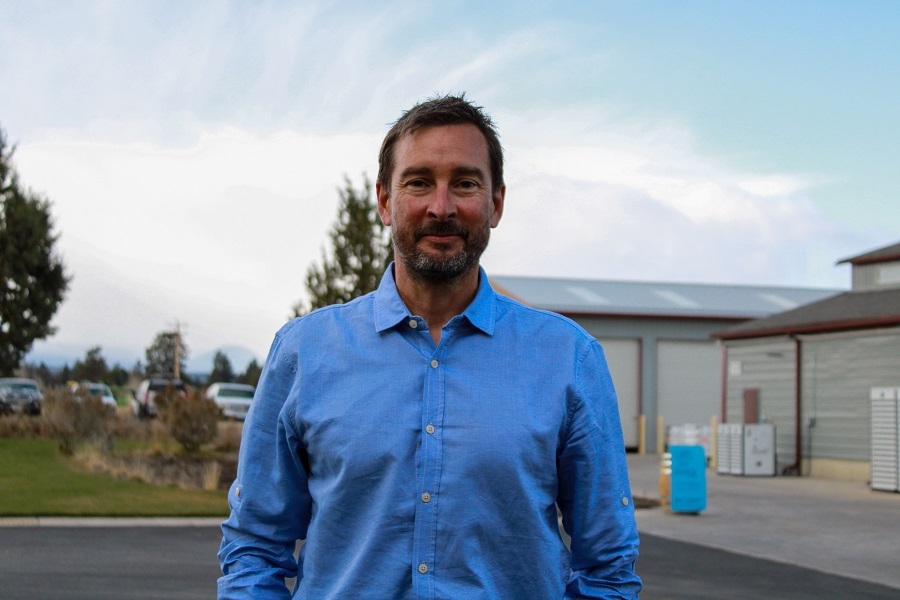‘When we’re forced to play on a tilted playing field we end up losing,’ Alan Dietrich tells OBM, but small-batch booze sells well when distilleries get a fair shot
Oregonians bought more liquor at the onset of the COVID-19 pandemic than they did the previous spring — and they continue to do so.
Data from the Oregon Liquor and Cannabis Commission show a 20% bump in spirits sales in March 2020 versus March 2019. Much of that increase coming from consumer sales, which jumped from $41.2 million in March 2019 to $59.5 million in March of the following year. (The state reported $6.4 million in sales to licensees — that is, bars — in March 2020 versus the previous March. That drop is unsurprising since most bars were shuttered for the last half of March 2020.) By March 2021, the state reported $65 million in total spirits sales — just a slight dip from March 2020’s $70 million and much higher than the $55 million reported in March 2019.
By the end of December 2021, the most recent date for which OLCC, overall spirits sales — $92.4 million — far exceeded pre-pandemic figures (the state reported $75.9 million in sales in December 2019), and consumer sales remained particularly robust.

Barrels of Crater Lake Spirits Whiskey. Credit: Crater Lake Spirits.
But those numbers don’t tell the whole story, in part because they don’t differentiate between large distillers like Absolut and small-batch, local distillers.
COVID-19 shut down tasting rooms, rattled supply chains and led some out-of-state distributors to favor large, established liquor brands with more money to spend on permitting and advertising.
But as the economy recovers and consumer spending habits change, small-batch distillers have found ways to get around challenging distribution models and market to younger demographics.

Whiskey bottles getting filled at Crater Lake Spirits. Credit: Crater Lake Spirits.
Crater Lake Spirits in Bend has been part of Oregon’s craft spirits industry for 26 years. Founder and CEO Alan Dietrich talked to Oregon Business Oregon’s craft spirits industry is adapting, and what new challenges it could face on its road to recovery.
How much of an impact has COVID-19 had on Oregon’s craft spirits industry?
COVID-19 has had an enormous impact on our industry in three categories.
First are supply-side issues. Disruptions in the supply chain and labor shortages that have been reported on extensively and are affecting pretty much everybody. The second is people’s buying habits have changed. Some of those changes actually benefit us, but that depends entirely on the third category, which is distributor behavior.
Spirits can’t be sold directly to the consumer. In some states that means going through a private company or through the state itself, as is the case in Oregon. The changed behavior of those private distributors because of COVID-19 has really affected our ability to get our product to market.
In Washington for example, we are down to our 2016 numbers and haven’t been able to climb out. We can’t get distributors to carry products for us because they are at the beck and call of the largest brands. Large brands have used COVID-19 as an excuse to get distributors to block some of the smaller brands from getting to market. In some ways this is just an acceleration of a trend we were seeing already, but COVID-19 lit a fire under it.
In Oregon, where the state is fairly apolitical when it comes to favoring one brand over another, we have done extraordinarily well. When the buying decisions are up to the liquor stores and restaurants, smaller brands like ours do really, really well.
When we’re forced to play on a tilted playing field we end up losing. COVID-19 has really shined a light on that dynamic.
Have trends in online buying helped you find ways around the larger brands putting pressure on distributors?
We have been able to find workarounds.
You can go on our website and click ‘buy now’ and have one of our bottles delivered to you some days later, but you pay a premium for it. That’s because the purchase order goes to a retailer, then it goes to a distributor then it goes back to me. So I have to fill all three links in that three-tiered system.
Anything that allows more direct-to-consumer sales or makes direct-to-consumer sales easier benefits us. That’s really big in our industry right now.
Are state governments doing anything to make life easier or harder for small craft distillers?
Getting rid of that three-tiered system would be the legislative fix, but that’s a very complicated knot to untie because every state has its own rules and there are federal regulations to get around.
Some states, like Oregon, allow to-go cocktail orders, and that’s been good for us.
We are also going to be seeing two or three bills by the grocery lobby trying to abolish the OLCC and privatize liquor sales in the state. They tried to do it some years ago and had to back off. But they are going to try again.
That would be catastrophic for both the consumer and for the craft businesses. Right now we thrive under the protection of the OLCC. If that goes away we would have to go through a private distributor like in California and Washington, which would add an enormous amount of expense for us to make our product.
Consumers are spending more time on screen than they did before COVID-19. How has that impacted your marketing strategy?
We’ve been trying to create brand awareness for 26 years, and COVID-19 has set us back about five years.
The world has changed.Tasting rooms are a huge benefit to increasing our brand awareness, especially in a community like Bend where we get a lot of visitor foot traffic. We’re thankful Oregon has let us have tasting rooms. But now people are a little more hesitant to go than they were before.
Direct-to-consumer marketing has also exploded over the last three years. We’ve had to get very savvy in crafting our message. Our marketing team used to be a group of seasoned old-hands. But now with social media and everything, I think the senior member on our marketing team is 27 years old.
Frankly, at 54 years old I don’t get a lot of it. Like, why would anyone care what an influencer says? But it’s a huge deal.
How has messaging helped you to create demand?
Looking into the future, what we’ve done is taken a lot of our corporate culture initiatives, which we didn’t spend any time talking about before — our employee benefits, our sustainability initiatives — and put that into the forefront of our marketing.
What we’ve realized is our brand image is more than just our marketing message. It’s who we are as a company. We have found that it really resonated with younger groups, under 30’s and 40’s.
We talk a lot more about our recycling efforts, our local production and the individuals within our company. We’re no longer saying “We’re the best vodka in the world.” we are saying “This is who we are, and that makes us the best vodka for you.”
To subscribe to Oregon Business, click here.




